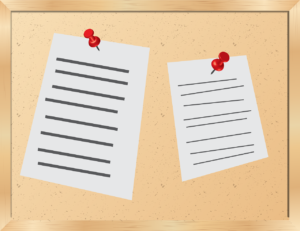Planned And Published In Advance
Every once in a while the question, “What makes a good sensei?” comes up for discussion. There are, of course, many valid answers for this question. This post is going to take a different approach to the standard responses. This month will kick off a series looking at what makes a good training session. Since the sensei runs the session, a good training session requires a good sensei. The inference being that if you do these things then you will improve as a sensei. This post will be considering that the session should be planned and published in advance of training.
Background
Before we get too far into this it’s important to have some background. There have been studies of elite athletes to discover what, precisely, they look for in an effective coach. Rushall (1995, Think And Act Like a Champion) observed that, “There is a group of overt and covert behaviours that are common to sporting champions”. Of particular interest is that he claimed this list was unchanging. Rushall researched the behaviours of 155 champions and record-holders over a 20 year period. What he discovered was that there were no differences between the old champions and today’s. The basic core values remained the same and Rushall listed the items in his work. Of this list, 10 of them are under the direct control of the coach. The first of these is that excellent coaching sessions get planned and published in advance of the session.

What Would That Look Like?
Here’s an example of what I would issue publicly for a three hour session on our dojo social media feed. All students can see it. It’s also published at least a day in advance of the training session:
Saturdays session. As always everyone welcome:
Basics:
Standard Warm Up
- Mae <forward> ukemi <roll>
- Tai no henko <body turn>
- kokyu <breathing> ho <exercise>
—
Katame <controlling> Waza <techniques>:
- Shomen <top of head> uchi <strike> ikkyo <first principle> omote <front>
- Shomen uchi ikkyo ura <rear>
- Ai <same> hanmi <stance> katate <wrist> dori <grasp> kote <wrist> gaeshi <twist>
—
Nage <throwing> Waza:
- Shomen uchi irimi <entering> nage ura
- Ai hanmi katate dori shiho <4 direction> nage ura
- Ai hanmi katate dori shiho nage omote
—
Weapons:
- Ukenagashi <beginning sword>
15 minute break halfway through 🙂
Nobody could claim that they didn’t know what they would be doing during the session. It’s worth noting as well that, while not shown here, every aspect of that session is carefully timed as well. I generally run the session in 15 minute blocks. 5 minutes to teach (including teaching the ukemi), and 10 minutes to train. There’s a specific reason for those times but that’s better explained in a later post. For now, it’s sufficient to say it’s about the neuroscience of concentration.
Why Is It Important To Plan?
There are many reasons for this. The first is that it allows a sensei to prepare sessions as part of an integrated whole. It is much easier to build students to a higher level of skill through a long term, carefully considered plan, than it is to do so on an ad hoc basis.
Any sensei planning the lesson on the journey to the dojo will be less effective than they could be. The simple reason is that there will have been no time to consider anything beyond the session’s basic content. By planning the session well in advance, the sensei can consider how long each activity will take. They can determine what the theme for training should be, how to link aspects of the class together. They can lay the groundwork for connection to future sessions and build on previous ones. Training will start to develop structure, and the sensei can create a learning path for each student.
Planning the session will also allow a sensei to build up a record of what has been taught and when. The sensei can then identify gaps in teaching and close them. For instance, a quick check of my records shows that many of my students have not trained juji garame. There is a reason for this but that only highlights a need to develop their relevant skills so they can train juji garame.
Through planning (and therefore recording) a sensei can start to build specific themes into their session. A lesson can examine a particular aspect instead of just doing random techniques. That could be the nature of a specific entry for example, or how to counter when a nage moves into a particular zone. This should be tailored to the weaknesses of the students to aid their development.

Why Is It Important To Publish?
If a student knows in advance what is coming then they can manage their energy appropriately for the entire session. Imagine an intensive randori is going to be part of the training session. If students know this in advance then they may decide to hold back some energy for that. If they didn’t know, then they may find themselves going into a randori without any reserves at all. There is an argument some make that that’s a good thing. It may be but if all the students are exhausted before the randori then that means the ukes are too. Worn out ukes for a randori are not what you want to have.
Another aspect of publishing in advance is that it provides the student with an opportunity to determine personal goals for each session. It empowers them to determine what they want to get from each section of the class and drive forward to that. There is a danger there though that the sensei must be aware of. Very few people would engage in Deliberate Practice, preferring to concentrate on what they are already good at. That’s fine on occasion, but not over the long term if they wish to improve.
Planned And Published In Advance
The first aspect of crafting an excellent session starts with planning and publishing in advance. It takes a little bit of extra time but the benefits to the dojo and the students are well worth it. Sessions will run smoother and progress can be swifter.
There may be times when you have to abandon a lesson plan entirely but they will be few and far between.
Planning and publishing in advance will make you a better sensei. It will encourage full preparation for each class and creation of a structured learning programme beyond the next thing on the grading syllabus. It will also begin to promote true coaching involving the individual needs of each aikidoka instead of just working on something that hasn’t been trained in a while.
If you can afford it, and would like to help out,
consider donating some brain fuel!
Also, if you enjoyed this post you can find further insights in this book.